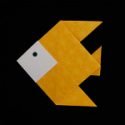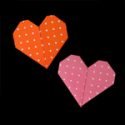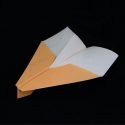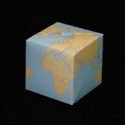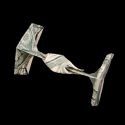Crease Patterns

Crease patterns (CP) can be a mystery! This page will answer some of the common questions regarding CP.
What are CP?
CP are the lines on a piece of paper when you unfold an origami model. There are many creases in an origami model but not all are shown in a CP diagram. Only the critical folds that form the main part of the model (called the ‘base’) is shown.
Some diagrammers will use red and blue lines to differentiate between valley and mountain folds. If a CP is particularly complex, shaded circles are used to show the major body parts. [Photo from Nicolas Terry
]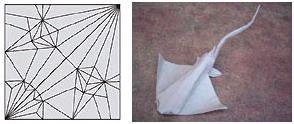
Why do people use CP?
Why do people use CP when conventional diagrams are so much easier to understand?
- CP are easy to generate: just unfold the model, scan or draw the line patterns, and you’re done. A single image will show all the important folds in the model. In contrast, conventional origami diagrams are time-consuming and tedious to generate.
- If you want to fold an origami model and there are no conventional diagrams for it, then you must use the information in the CP to determine how the model is folded. You use the CP because you have no other choice.
- CP are fun to study. You can look at them and determine which creases are responsible for the different parts of the model. A crease pattern with two distinct regions may represent the head and the body of the model. Multiple short creases all radiating from a single point may be claws, toes, or tentacles.
- Analyzing CP can allow you to modify an existing model or design new models. [Photo below from Go Guspath]
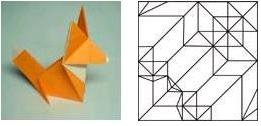
Who uses CP?
Origami designers use CP to help create new origami models. Using paper and pencil, technical origami designers map out entire origami models via their CP. Eric Joisel uses CP to create origami models. Robert Lang’s TreeMaker is a computer program that allows you to generate CP for rather complex origami models.
Since some origami models are not diagrammed, people will fold models using the information in the CP. Anyone can fold from a CP but the diagrams are challenging to decipher and can be approached as if they are puzzles.
The process involves folding the necessary creases and then collapsing the paper into the final model. It helps if the creator has used different line-patterns to differentiate between valley and mountain folds. Shaded regions designating the different body parts are helpful too.
Folding from a CP is not simple and will require a number of tries before success. Don’t be tempted to fold a complex model from its CP because a conventional diagram is not available. Start with easy models before progressing to the complex models. You can find tips on how to interpret CP in:
- Eileen’s Beginners Guide to Crease Patterns
- Gerwin Sturm’s Guide to Box Pleating
- Nicholas Terry’s Design of Origami Models articles
[Photo from Nicolas Bandoni]
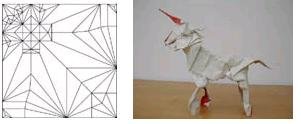
Where can you find Crease Patterns?
In attempt to de-mystify CP, some origami enthusiasts offer progressive CP. There are also some easy CP and they quickly progress to challenging patterns.
Progressive CP:
- Beetle
- European Rhinoceros Beetle
- Horse
- Japanese Macaque
- Little Big Duck
- Mutant Crane
- Pitch Black Creature
Easy CP:
- 4 Petals Box (David_paperfold)
- Bird (Vitzkap)
- Peacock (G Naor)
- Cube (D Andreozzi)
- Fractal (Cadix)
- Moby Dick sperm Whale Head (Vitzkap)
- Perfect Immortal Seashell (LG Quach)
Intermediate CP:
The lion’s share of CP can be found in a handful of web sites.
- Design in Origami
- Robert Lang
- TT’s Origami Page
- Origami Creator’s Fantasy
- Brian Chan
- Mark Lenard
- Spartan (prefo)
You can also buy origami paper which have the crease lines printed on the back. These are often for children to help them along in the folding process. However, you can use them as an introduction to crease pattern folding. For example, see this book Origrafix
Whether you love crease patterns or hate them, most people will agree that the patterns themselves are visually and geometrically stunning. [Photo by Jassu]
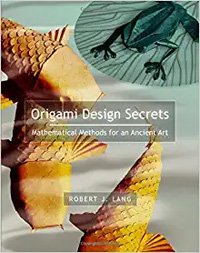
Robert Langs’ book explains how crease patterns are used to design origami models. It’s a must have for those who want to understand how CP are used to design origami models. See book review or buy Origami Design Secrets from amazon.com
The comic strip below was featured in May, 2012. It is an example of how some people perceive CP – a bit of a joke. Comic is by Paul Trap and is from gocomics.com
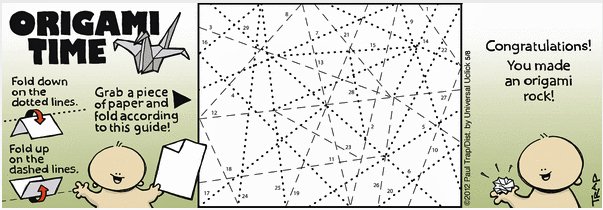
—> go to Home Page
—> go to Site Map
—> more types of origami
—> free origami instructions









